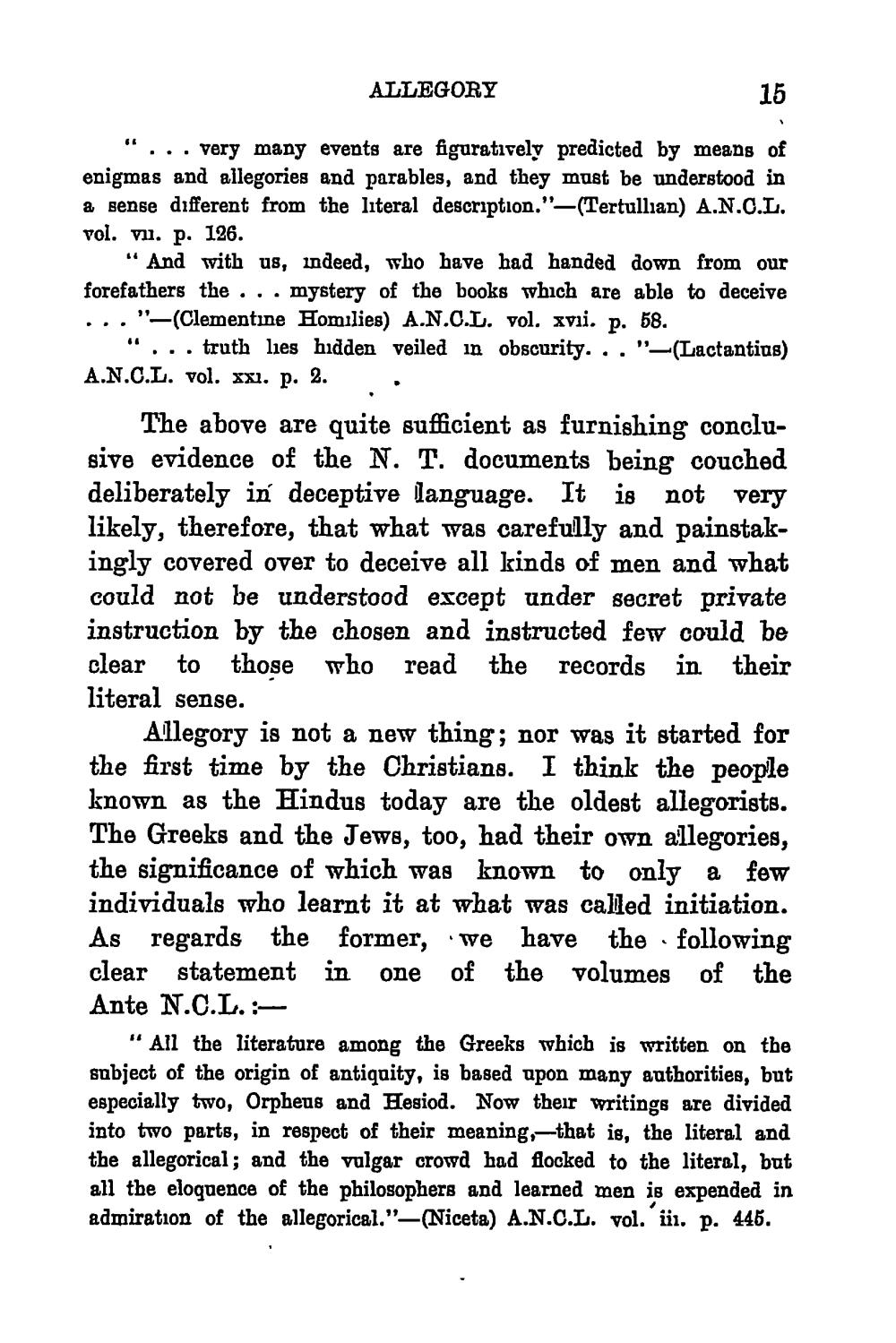________________
15
very many events are figuratively predicted by means of enigmas and allegories and parables, and they must be understood in a sense different from the literal description."-(Tertullian) A.N.C.L. vol. v. p. 126.
"And with us, indeed, who have had handed down from our forefathers the... mystery of the books which are able to deceive (Clementine Homilies) A.N.C.L. vol. xvii. p. 58.
... truth lies hidden veiled in obscurity.. "'-(Lactantius) A.N.C.L. vol. xx. p. 2.
ALLEGORY
The above are quite sufficient as furnishing conclusive evidence of the N. T. documents being couched deliberately in deceptive language. It is not very likely, therefore, that what was carefully and painstakingly covered over to deceive all kinds of men and what could not be understood except under secret private instruction by the chosen and instructed few could be clear to those who read the records in their literal sense.
Allegory is not a new thing; nor was it started for the first time by the Christians. I think the people known as the Hindus today are the oldest allegorists. The Greeks and the Jews, too, had their own allegories, the significance of which was known to only a few individuals who learnt it at what was called initiation. As regards the former, we have the following clear statement in one of the volumes of the Ante N.C.L. :—
"All the literature among the Greeks which is written on the subject of the origin of antiquity, is based upon many authorities, but especially two, Orpheus and Hesiod. Now their writings are divided into two parts, in respect of their meaning, that is, the literal and the allegorical; and the vulgar crowd had flocked to the literal, but all the eloquence of the philosophers and learned men is expended in admiration of the allegorical."-(Niceta) A.N.C.L. vol. ii. p. 445.




